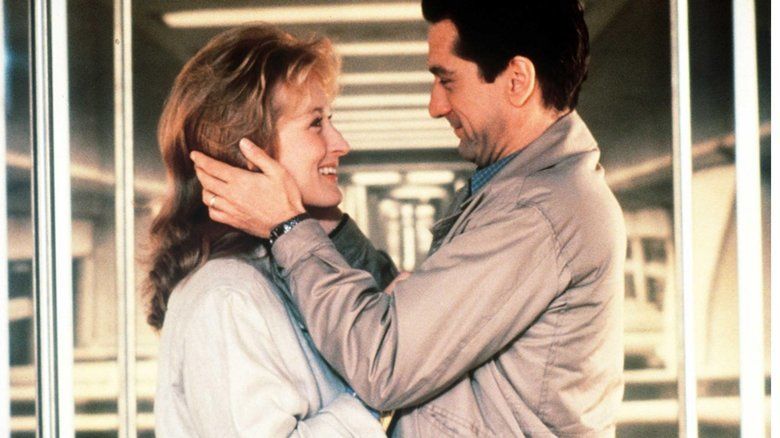Introduction
In an era often defined by larger-than-life romances and grand gestures, Falling in Love (1984), directed by Ulu Grosbard, stands out for its subtle, grounded portrayal of love found in the unlikeliest of places. Starring Robert De Niro and Meryl Streep—two titans of dramatic acting—the film shifts gears into the quieter realm of emotional realism, exploring how two seemingly ordinary people confront extraordinary feelings within the constraints of everyday life.
Falling In Love (movie.1984) – Ending scene
Plot Overview
Set against the backdrop of New York City during the holiday season, the story follows Frank Raftis (De Niro), an architect, and Molly Gilmore (Streep), a graphic designer. Both are married, and their lives are well-established when they first cross paths by chance in a Manhattan bookstore. A simple mix-up involving Christmas gifts initiates a series of brief encounters that gradually evolve into a deep emotional bond.

As Frank and Molly continue to run into one another, they begin to realize that their connection runs far deeper than coincidence. Despite their attempts to remain loyal to their spouses and responsibilities, the growing emotional intimacy challenges their moral boundaries and forces them to confront their unhappiness and longing for something more meaningful.

Themes and Tone
Falling in Love examines the internal conflict between desire and duty. Rather than relying on melodrama, the film focuses on the nuances of facial expressions, hesitant conversations, and the quiet spaces where true emotions dwell. The restraint shown by both characters enhances the story’s emotional tension, making their internal struggles more compelling than any outward drama.
The cinematography captures the melancholy beauty of New York in winter, reinforcing the film’s introspective tone. Dave Grusin’s delicate score complements the understated performances, allowing the audience to feel the weight of the characters’ decisions without being overpowered by sentimentality.

Conclusion
Falling in Love is not a conventional romantic drama—it’s an exploration of quiet yearning and the emotional crossroads that many people face but rarely discuss. With its nuanced performances and restrained storytelling, the film offers a mature, introspective take on love, timing, and personal growth. For those drawn to character-driven narratives and realistic depictions of relationships, Falling in Love remains a hidden gem worth revisiting.